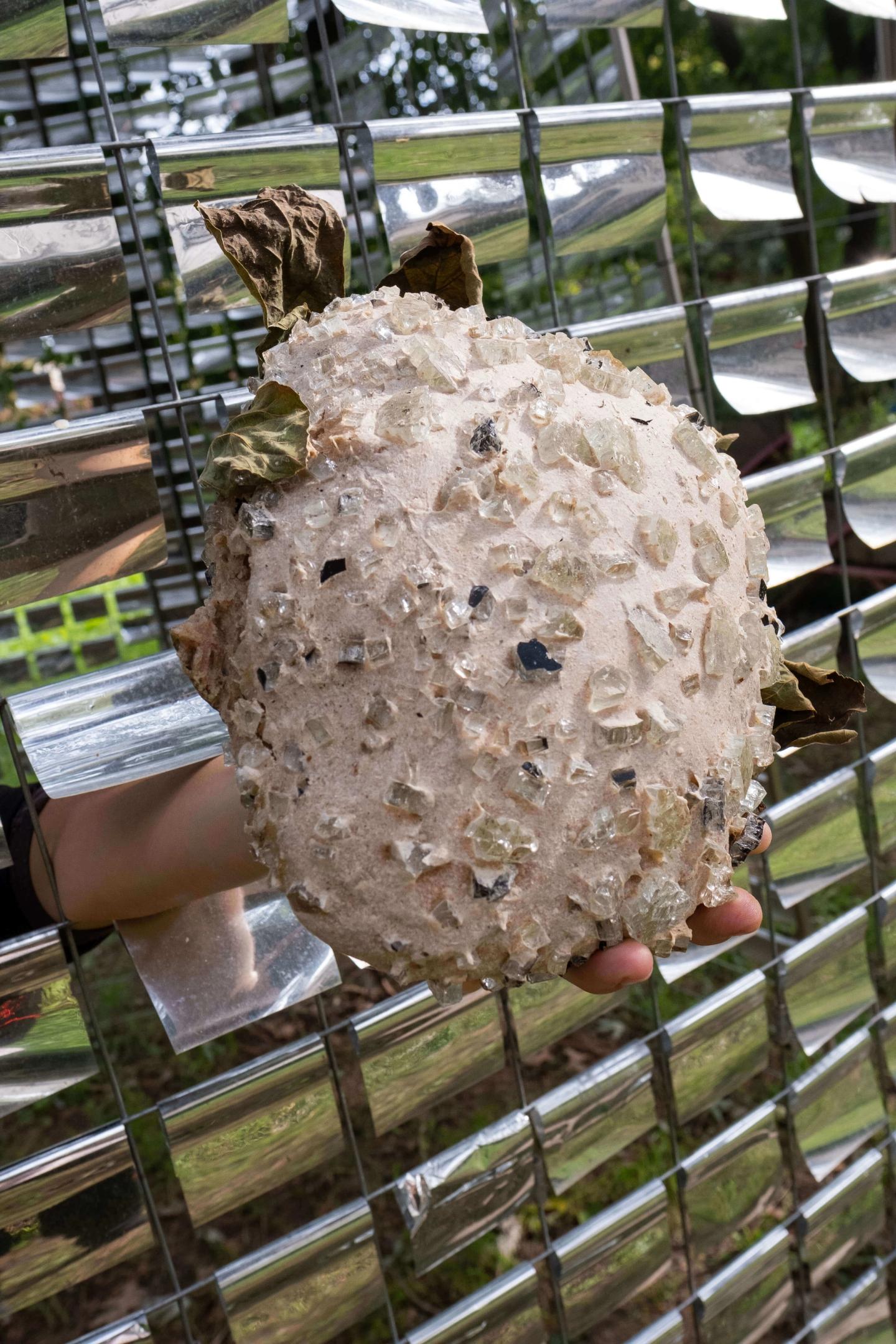

The activation of the sourdough starter started a number of other forces, some of which became clearer throughout the residency.
Among our group, a few, including myself, identified as breadmakers. Just as our sourdough starter made its awakening clear and tangible, we also started planning our baking for the next few days. As we were tasked with preparing food for the whole group, the breadmakers decided to occupy ourselves with baking in the container lab that was parked in the garden in the days ahead. After capturing and mixing other microorganisms and yeasts, we isolated our sourdough starter in the lab and made it grow inside its insulated walls, allowing the smell of bread to pervade the space. We checked on its activity regularly, and the next day we decided that the time for breadmaking had come. We planned everything according to our daily schedule, occupying our free time with bread and its processing. We improvised a recipe for this rhapsodical bread, our shared dough alive and active. Its leavening proved that mysterious affiliations had been made: we just turned them into more accessible symbiotic alliances.
[Image 1] To enter the forest or how to practice anticapitalism, by Denise di Summa
The following day, we baked. I was first to wake up in the morning, to turn on the ovens beforehand. I also took the dough out of the fridge and put it next to the oven so it could continue proofing. When I came back to check on the temperature, the scene that unfolded before my eyes was totally unexpected: the glass of one of the oven chambers had exploded. Glass shards were scattered everywhere, contaminating the dough next to it.
My first reaction was shock: rhapsody itself was manifesting! I immediately called the others, and we all agreed to still bake everything. Firstly, we took care of the uncontaminated dough, making sure we could have edible bread and focaccia for the next few days. With all the rest, we entered a creative process in which what had been a dangerous problem became material for our art. The dough incorporated the glass, the organic contaminating the inorganic. We became part of this fascinating, dangerous mixing and shaping of the dough. We baked this material fusion into a rhapsodical crystal-bread. Our piece of art was then shared with the group, and it became our metaphysical companion during our brainstorming and designing sessions. Its regular shape was fragmented by its shining glass coming out, bluntening our eyes every time we looked at it. It was as if the bread had been infested by another material entity in a disturbing kind of beauty.

[Image 2] A crystal-bread, by Luz Del Carmen
Our crystal-bread taught us how to look beyond a catastrophic event, deal with it, and incorporate it within our daily practice of life.
Paying attention to shadows and flames enables us to take care of ourselves and other forms of life. We must go beyond the mere preservation of an insipid existence: to enter a disturbing, ghostly dimension, to take life as a subset of a more extensive tremor, movement itself as the subject of a deeper vibration.
References
Morton, T. (2019) Humankind: Solidarity with nonhuman people. London: Verso.
_______
This article is a contribution from one of the participants of The Gramounce Food & Art Alternative MA 2024-25. Their writing is inspired by one of our seminars, or responds to a similar field of interest within food & art.


Just as a loaf spontaneously ferments, my research with bread is a deliberately undisciplined practice that allows me to unfurl and overcome my human boundaries with all my senses.
As a nomadic baker, I wander around collecting elders' stories about bread-making to design them into an ever-evolving ecology of practices. As a gastronome, my daily relationship with food makes me question the ethics and meaning of methods of production, transformation, and consumption.
My contributions to the Gramounce form part of my philosophical research into bread which started while studying gastronomy at the University of Gastronomic Science in Pollenzo (IT). It has since developed into my Master’s thesis on local ecological knowledge around bread-making.
